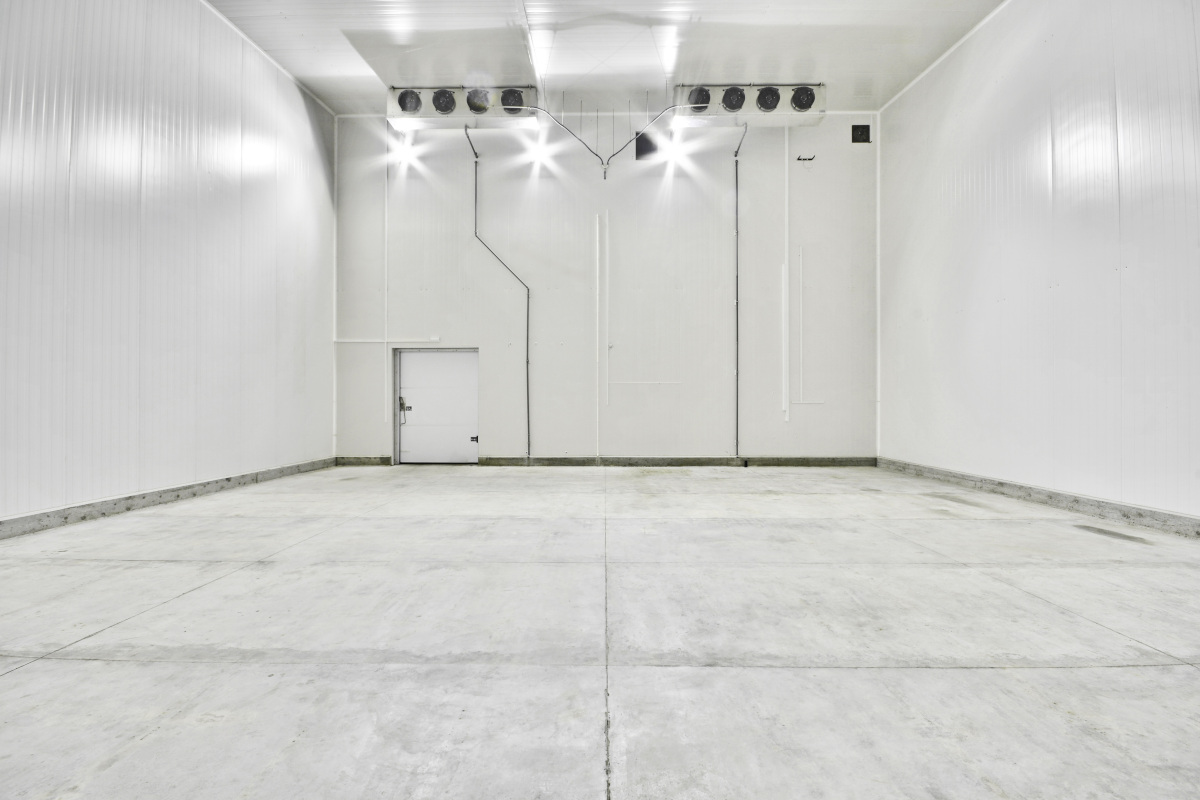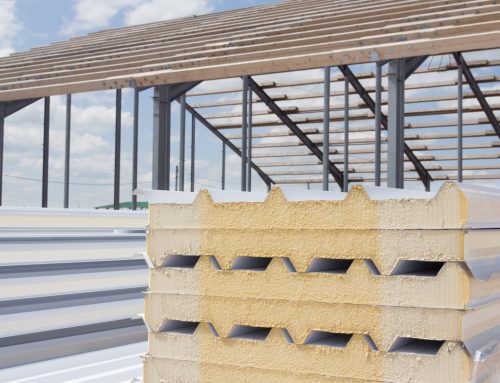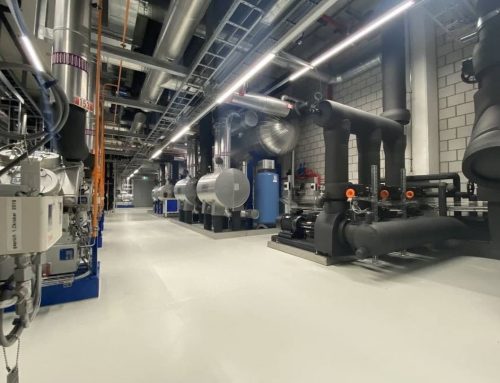Concrete floors in freezers are durable, but the underfloor heating system requires regular preventive maintenance.
If the proper measures are not taken, frost can form on the ground, leading to the floor rising and cracking, and many potential problems: operational safety, structural damage.
What is the reason for frost heave?
The soil under the floor of the freezer must be heated to keep the temperature above the freezing point. This can be done with the help of heating systems such as:
- static ventilation tubes;
- forced ventilation tubes;
- forced ventilation tubes with heating;
- electrical heating;
- warm glycol.
However, if the heating system is defective and the soil does not heat up to a temperature above 0°C, extreme cold can pass through the concrete floor and insulation and penetrate the soil. This will make the moisture in it freeze and form an ice lens that will lift the concrete floor. After a while, the lens will grow and start to push the building’s foundation upward.
What damage can frost heave do?
Frost heave can cause structural and logistical damage:
- threat to the safety of employees;
- cracks in the floor of the freezer;
- destruction of the foundation;
- significant repair costs;
- walls and roof elements bend to the points of destruction;
- destruction of the object.
The longer such heave is left unattended, the more damage it can lead to.
How to fix frost heave?
First of all, pay attention to the warning signs before the frost heave takes place. Typical signs are the following:
- cracks in the freezer floor;
- uneven floor grade of the freezer;
- tilted, unaligned racks or pallets;
- it is difficult for forklifts to maneuver on the floor of the freezer.
Depending on the degree of damage to the floor, repairs can range from simple repair of the underfloor heating system to removing and replacing the wear plate.
However, in any case, the underfloor heating system must be fixed. For major renovations, it is important to fix and compact the frozen soil before re-pouring new concrete floors.
How is it possible to prevent frost heave?
- Floor insulation is recommended for cameras, regardless of their location, to ensure their durability.
- If the facility has floor sensors, make sure they are working properly and program the sensors to alarm. Heave can form quickly, depending on the moisture content of the soil under the floor of the freezer and the surrounding weather conditions.
- To increase the temperature in the freezer and avoid damaging the concrete floor, gradually increase the temperature, holding it for 48 hours at each stage.
If your plant staff needs help with this, there are many vendors (including Subzero) that can inspect your underfloor heating and freezer system.
Keep in mind that preventative maintenance is critical — from the top of your premise to its bottom.
Relevant articles




